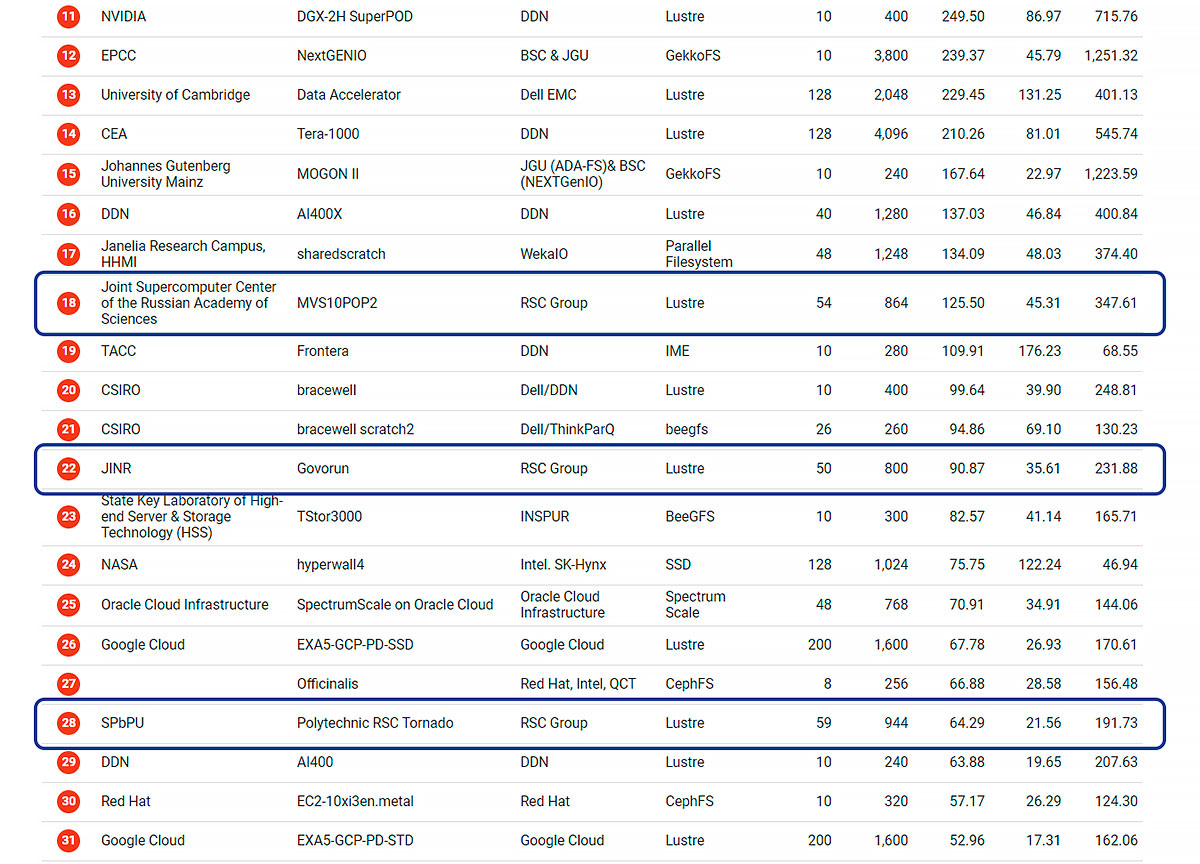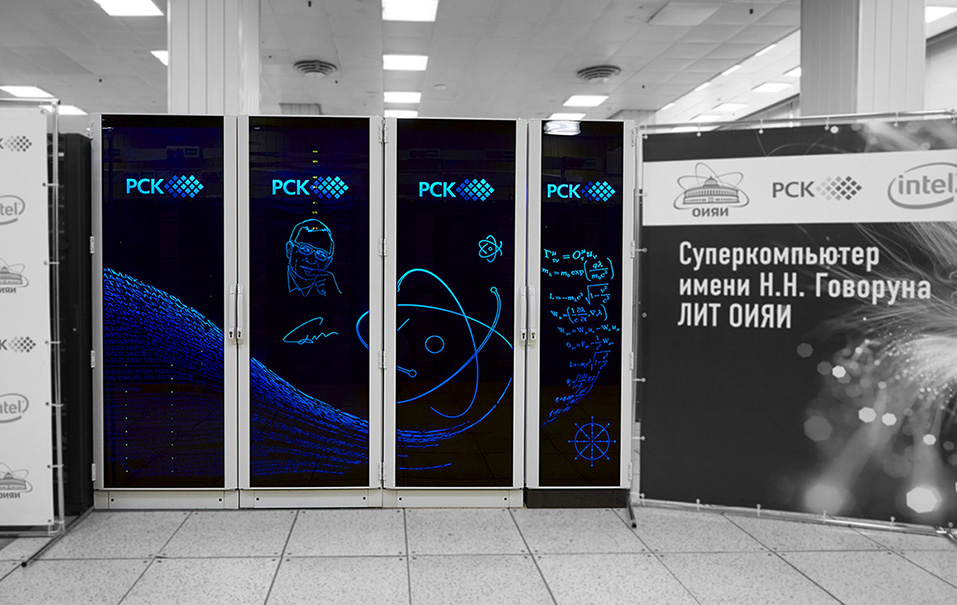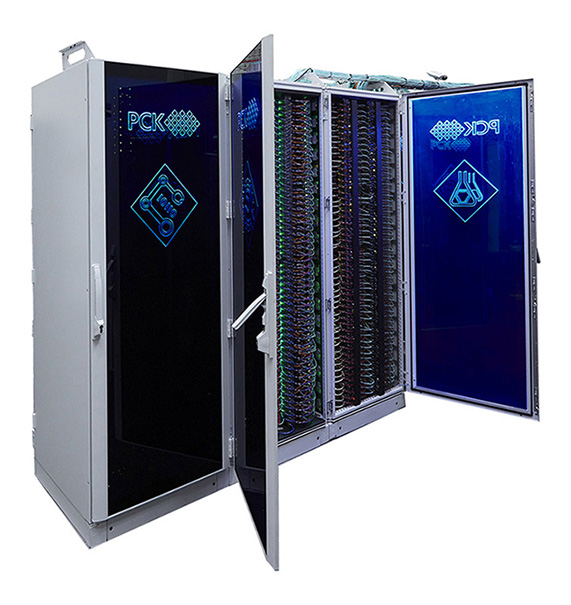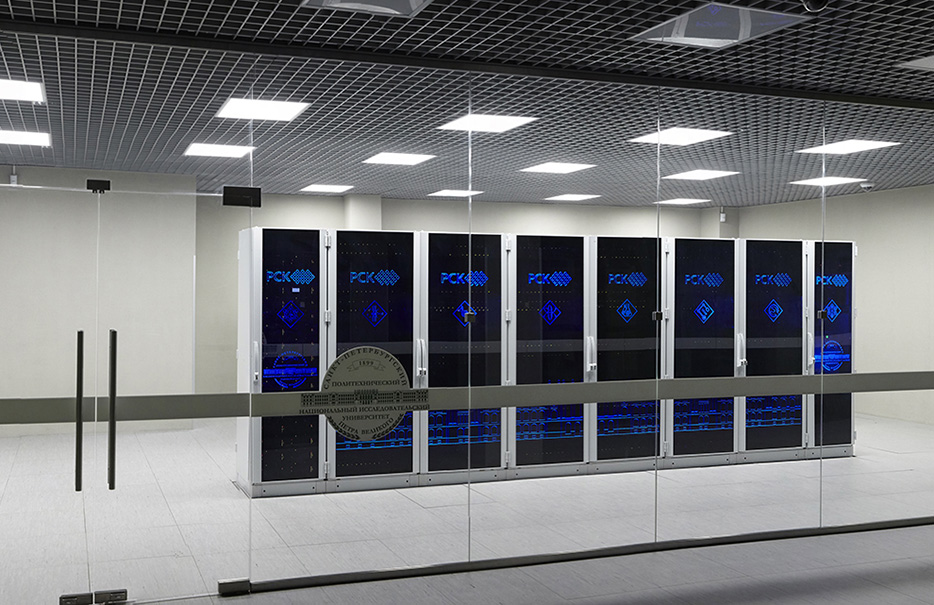SC20, November 19th, 2020 — Three supercomputer systems deployed by RSC, the leading Russian developer and integrator of innovative ultrahigh-dense and energy efficient solutions for high-performance computing (HPC), data centers, cloud platforms and storage-on-demand, are the only Russian systems in the new edition of global IO500 rating of the best performing HPC-level storage systems (as it was announced at SC20, the world’s largest supercomputer exhibition).
MVS-10P OP2 supercomputer (Joint Supercomputer Center of the Russian Academy of Sciences, JSCC RAS) is a new member of the list entered on 18th place, which is the best result among all Russian systems there. Govorun supercomputer holds 22nd position (Joint Institute for Nuclear Research, JINR in Dubna, Moscow region), and ‘Polytechnic - RSC Tornado’ system got 28th place (St. Petersburg State Polytechnic University, SPbPU). Previous IO500 rating featured two RSC supercomputers, so now the company has increased by 50% the number of its systems in this list of the best performing HPC-level storage solutions.
These excellent results were achieved by using unique distributed and composable RSC Storage on-Demand systems based on Intel® SSD and Intel® Optane SSD with NVMe interfaces in all projects. JSCC RAS supercomputer also features new storage nodes based on high-speed Intel® SSD drives in E1.S form-factor (so-called ‘rulers’).
When Govorun supercomputer was installed and launched at JINR in June 2018, it immediately took the high 9th place in the global IO500 rating.
MVS-10P OP2 supercomputer at JSCC RAS
The Joint Supercomputer Center of the Russian Academy of Sciences is one of the powerful Russian supercomputing centers in the field of science and high education. Over 150 research groups use HPC resources of JSCC RAS for solving fundamental and applied tasks.
Total peak performance of JSCC RAS systems deployed by RSC based on ultrahigh-dense and energy efficient RSC Tornado and RSC PetaStream solutions with 100% ‘hot water’ liquid cooling is currently 1.7 Petaflops.
MVS-10P OP2 supercomputer at JSCC RAS had undergone another scheduled upgrade in 2020. Its peak performance has been increased by almost two times by 93% and is currently 823.91 Teraflops. Maximum LINPACK performance of this JSCC RAS supercomputer is now 572.19 Teraflops.
This computing power increase resulted from installation of a new segment of 86 computing nodes based on Intel® Xeon® Scalable 2nd Generation server processors (Intel® Xeon® Gold 6248R), Intel® S2600BPB Server Board and Intel® SSD. Intel® Omni-Path interconnect technology enables high-speed data transfer between the computing nodes. MVS-10P OP2 supercomputer is also based on comprehensive ultrahigh-dense and energy efficient RSC Tornado solution with 100% ‘hot water’ liquid cooling.
Supercomputer named after N. N. Govorun in JINR
Govorun supercomputer of the Joint Institute for Nuclear Research is a joint project of the Theoretical Physics Laboratory (TPL) named after N.N. Bogolyubov and Laboratory of IT supported by JINR board. It was deployed in 2018 with help of specialists from RSC Group and Intel Corporation.
First iteration of the Govorun supercomputer enabled a lot of extra-complex and resource-intensive computations in the field of quantum chromodynamics patterns for research of hadronic matter properties at high energy density and barion charge and in presence of extra strong electromagnetic fields; accelerated generation and reconstruction of events for experiments within the scope of NICA mega-science project; enabled calculations of radiation safety of experimental JINR units; significantly accelerated radiation biology research and other applied science tasks of JINR; participated in international science collaborations. Research results were published in over 50 leading global science magazines.
JINR supercomputer was upgraded in 2019. After the upgrade, this hyper-converged and software-defined system has total theoretical peak performance of 860 TFLOPS with double precision. This is a new approach in HPC industry and this project has unique features making it adaptable for specific user workloads and maximizing utilization of supercomputer's resources.
The system has many different node types allowing for incredibly flexible configurations:
- Base computing nodes — dual-socket nodes with two high speed NVMe drives based on Intel® Xeon® Scalable 2nd Generation processors (Intel® Xeon® Gold 8268), Intel® Server Board S2600BP and high-speed 2TB Intel® SSD DC P4511 drives with NVMe interface in M.2 form-factor, as well as one 100Gbps Intel® Omni-Path adapter. These nodes are the building blocks for standard computing and distributed storage-on-demand systems.
- Enhanced storage functionality nodes — base dual-socket nodes with 12 extra M.2 slots for high-speed NVMe disks and high-speed PCIe bus controllers supporting all advantages of modern storage technologies such as SDS, NVMe-over-Fabric, M.2 Hot Swap, etc. Nodes are based on Intel® Xeon® Scalable 2nd Generation processors (Intel® Xeon® Gold 8268), Intel® Server Board S2600BP, two 100Gbps Intel® Omni-Path adapters and:
- 12x high-speed Intel® SSD DC P4511 2 TB M.2 drives with NVMe interface for high-speed static and storage-on-demand systems;
- or 12x high-speed low latency Intel® SSD DC Optane P4801X 375GB M.2 drives with NVMe interface.
These nodes can be used for high-capacity systems (up to 3.4TB per node) or as very fast parallel storage component (e.g. MDS in Lustre). - Nodes for hyper-massive parallel tasks based on 72-core Intel® Xeon® Phi™ 7290 coprocessors, Intel® Server Board S7200AP, Intel® SSD DC S3520 M.2 drives with SATA interface.
Hyper-converged approach resulted in unique high-speed storage system for “Govorun” with leading characteristics. This became possible only with RSC comprehensive hardware-software solutions, as standard technologies with separate storage systems would cost many times more.
Unique implementation of “on-demand storage” in “Govorun” enables generation of a specific storage system for each launched task with all required properties (capacity, speed, file system, persistence, reliability and security), which would also be impossible to achieve with standard approach to HPC storage.
‘Polytechnic – RSC Tornado’ supercomputer at SPbPU
St. Petersburg Polytechnic State University named after Peter the Great started creating one of the most powerful and innovative supercomputer centers (SCC) in Russia with peak performance over 1.1 Petaflops back in 2014, and ‘Polytechnic’ SCC has been commissioned successfully in 2015.
SPbPU's supercomputer center is focused on solving inter-disciplinary natural science research tasks and design of complex technical systems for hi-tech segments of local industries and science. Two cluster systems created and deployed by RSC at ‘Polytechnic’ SCC hold 4th and 19th places in the latest edition of Top50 list. The overall peak performance of SPbSPU's supercomputers has been increased by 23% in 2020 and currently amounts 1.6 Petaflops.
After scheduled upgrade of ‘Polytechnic - RSC Tornado’ supercomputer in 2020 its peak performance has increased by 29% to 1.309 Petaflops.
This computing power increase resulted from installation of a new segment of 64 computing nodes based on Intel® Xeon® Scalable 2nd Generation server processors (Intel® Xeon® Platinum 8268, Intel® Xeon® Gold 6248R), Intel® S2600BPB Server Board, Intel® SSD and Intel® Optane SSD. ‘Polytechnic - RSC Tornado’ supercomputer is based on an universal ultrahigh-density and energy efficient RSC Tornado solution with 100% ‘hot water’ liquid cooling developed by RSC Group.







